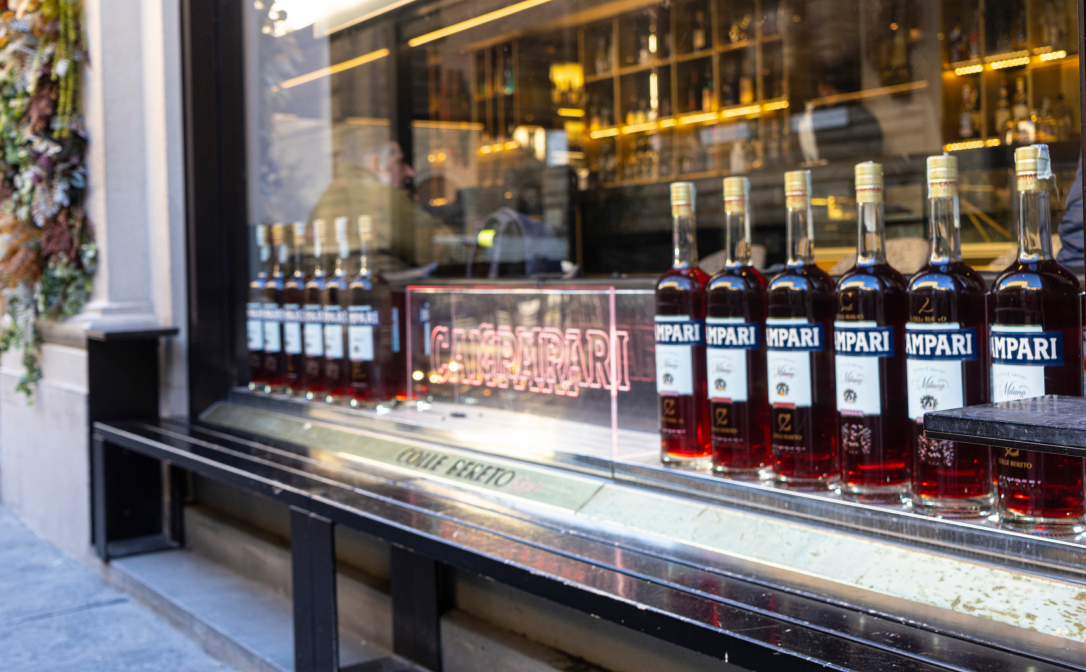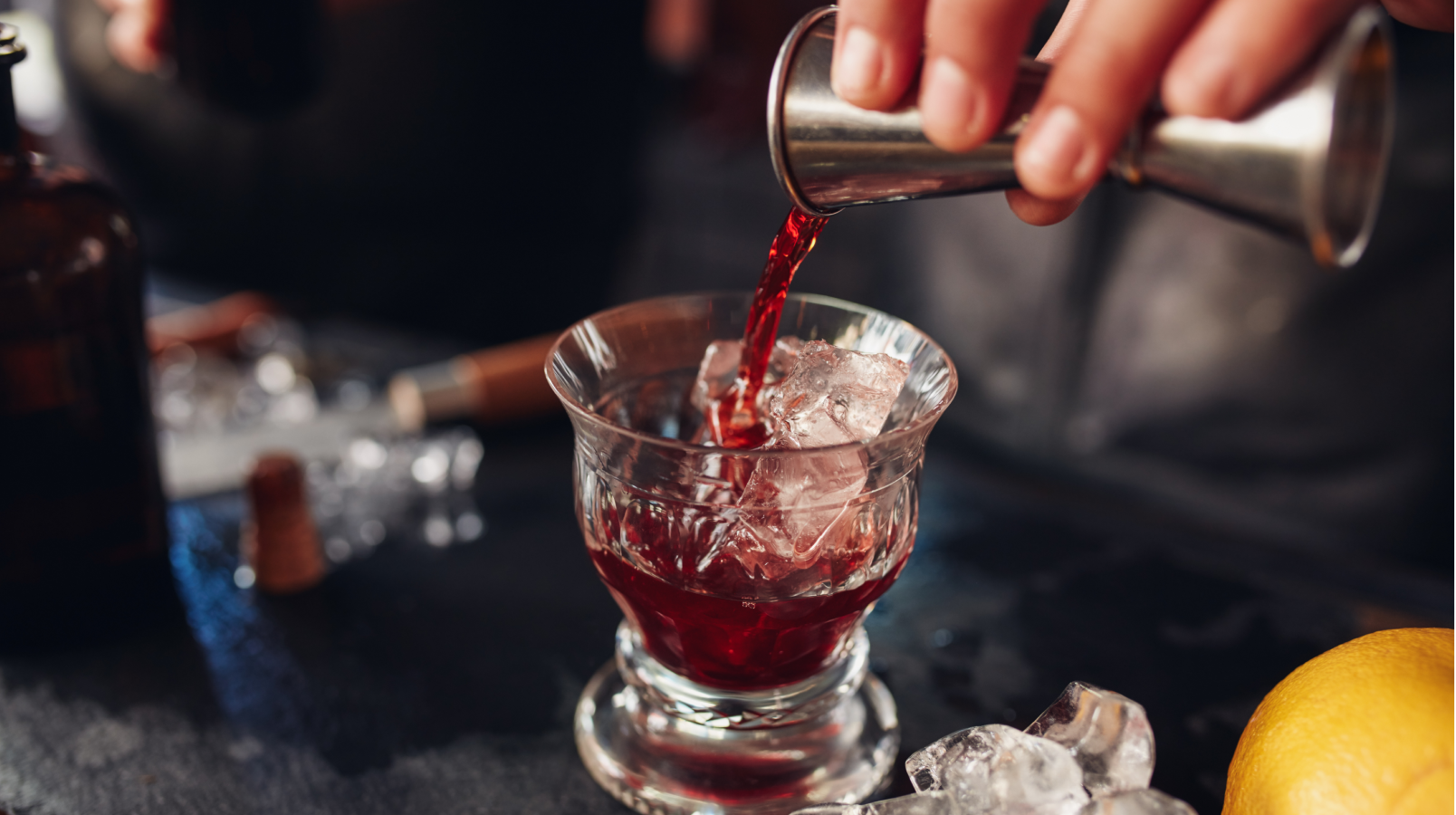To celebrate Negroni Week, we’ve invited Julian de Nechaud de Feral to share his take on the cocktail’s much-debated history.
Julian, known professionally as JdF, is a hospitality consultant, bartender trainer, bar and cocktail creator, drinks writer, global cocktail and spirits judge, host and presenter. With over 25 years in the industry – including more than a decade as Drinks Director at Gorgeous Group – he has created numerous bar concepts, cocktail, spirit and drinks programmes, and global beverage strategies. Beyond drinks development, he has also led on music, PR, staffing and design briefs for venues and events worldwide. Since 2019, he has worked independently, continuing to consult with drinks brands, hospitality venues and global projects.
With this wealth of experience, JdF has seen first-hand how stories in the drinks world evolve – and how myth, marketing and memory often blur together. Few cocktails illustrate this better than the Negroni.
In this day and age, knowledge of the Dunning-Kruger effect is widely understood and often referenced when debating subjects as broad as history, art, science or politics. The acceptance that “the more you know, the less you know” is a healthy paradox, as debates regarding the origins of classic cocktails exemplify. Taste is subjective and bartending techniques can be debated, but sometimes these debates can be resolved with a simple test of an accurate thermometer, refractometer or microscale.
However, the history of classic cocktails has been so deeply infused with received wisdom from overconfident, amateur historians, that today even the most seasoned bar veterans are not entirely sure where truth ends, and the marketing myth begins.
The Negroni is a fantastic example of this, particularly with the rise of aperitivo culture and high-profile celebrity endorsers. Like most classic cocktails, it is, at heart, a simple drink. But nonetheless it is mired in controversy, romanticism and patriotism. To celebrate Negroni Week, we delve into some of the stories and conundrums behind the drink that has seen more twists and turns than the Stelvio Path.
Any dedicated barfly will, at some point, have propped up a chunk of marble whilst a starry-eyed Italian bartender regales the story of The Count. And what a wonderful tale it is!
To set the scene, the go-to aperitivo at the turn of the 20th century was the ‘Milano-Torino’, created at Caffe Camparino in Milan. As one might expect from the name, the bar was owned by Gaspare Campari himself, and the drink was a simple combination of the Milanese bitter Campari and sweet Italian vermouth from Turin. The ‘Mi-To’ was often also served lengthened with soda as an ‘Americano’.

The famous bitter, Campari.
Enter Count Camillo Negroni, a turn-of-the -century Italian aristocrat, gambler and adventurer. On a visit to the Casoni Bar in Florence in 1919, the Count allegedly asks Fosco Scarselli – the bartender at the time – for a bit more of a kick to the usual ‘Milano-Torino’.
Whether or not an inspired twist from Fosco or on the specific request of the Count, legend has it that gin was added and a classic was born. As a result, patrons of the bar would order a ‘Milano-Torino in the style of Count Negroni’, later shortened simply to ‘Negroni’.
And this was the tale I told to my own patrons, give or take, for over a decade behind the stick. That is, until Paul Bradley, a friend with a penchant for drinks history and an archiver of hospitality books, pointed out something of a dissonance to this story. Considering the tales that this new cocktail tore it up throughout Italy from the 1920s onwards, it seems odd that a cocktail of that name and those ingredients simply isn’t mentioned in cocktail books (Italian or otherwise) or the press. If Italian patrons were drenching themselves in daily Negronis from Florence to Milan, how did this wildly popular drink entirely evade mention in text during years when writing about celebrated cocktails was something of the rage?
To make some sense of this, here is a timeline I’ve pulled together charting the most probable Negroni origin stories:
1857 – The African aperitivo
A Corsican General, Pascal Olivier Count of Negroni, claimed to have invented the Negroni while stationed in Senegal. He described the beverage in a letter as a “cocktail I invented … based on vermouth”. Supposedly it was such a hit that the drink remains popular in Senegal. This earlier Count Negroni mentions that the cocktail was created for a wedding in 1857, so it is impossible that this recipe used Campari, which was only founded in 1860.
Whilst it is entirely possible that there was a self-titled drink created by this Count Negroni in Senegal during the 19th Century, there is little to indicate that it is close to what we recognize today as a Negroni. All we know for certain is it contained vermouth.
1895 - A Negroni by any other name?
Almost four decades later, the ‘Modern American Drinks in Chicago’ publishes a recipe for a Dundorado, with Old Tom gin, Italian vermouth and ‘Calisaya’ – essentially a bitter liqueur not dissimilar to Campari.
1919 – The classic Count Camilo Negroni tale
This brings us up to the 1919 Count Negroni/Casoni Bar claim, however it is backed up with little documented evidence beyond hearsay.
1927 – The Boulevardier
The first known recipe to the ‘Boulevardier’, essentially a bourbon-based Negroni, was published, which – whilst most modern bartenders present the drink as a twist on the Negroni - interestingly makes this a predecessor to a recorded Negroni recipe itself.
1927 – The Old Pal
The same book, Harry MacElhones’s Barflies and Cocktails, is also the first to mention the ‘Old Pal’. MacElhone dates the recipe all the way back to 1878. Although now commonly made with dry vermouth as published three years later in the famous Savoy Cocktail Book, this version calls for Canadian whiskey, Campari and ‘Eyetalian’ (sic) vermouth. If his story is to be believed, this would make the Old Pal the earliest known example of the classic equal-parts sweet vermouth, Campari and base spirit that the Negroni is widely credited with starting.
1929 - The French Connection
Two years later saw the publication of a ‘Campari Mixte’: a cocktail which is exactly a Negroni and actually specifies Campari. However not referred to as a Negroni, garnished with a lemon zest and funnily enough published in the French cocktail book ‘L’Heure du Cocktail’.
1949 – The Negroni-Cocktail
A Spanish cocktail book titled El Bar: Evolución y Arte del Cocktail publishes the first example I have come across of a cocktail actually called ‘Negroni-Cocktail’, which includes all the constituent parts that we now recognise.
1955 – The UKBG recoginises the Negroni
Finally in 1955 the U.K. Bartenders’ Guild publish a recipe cocktail simply called a Negroni: specifically equal measures of gin, sweet vermouth and Campari, served on cubed ice with an orange garnish, which most would identify as the classic we know and love today…
Still, no sign of a written record from Italy though, which again calls into question the much-told story of that Italian icon so many of us have accepted.
Classic cocktails tend to stand the test of time as generally speaking they use commonly available ingredients, use equal or easy-to-remember proportions and typically not more than three or four ingredients. The downside is that it is entirely possible, especially in an age when there were far fewer ingredients, that a popular drink with similar ingredients could have been created in different places at different times.
These recipes are also likely to have been tweaked and twisted throughout the decades to the preference of local patrons, and creative bartenders.
So, while diligently working your way through twists on the classic recipe for this year’s Negroni Week, whether you doff your proverbial hat in the direction of Florence, Milan, Chicago, Barcelona, Paris, London or even Senegal, rest assured the truth might be more disjointed than a neat story.
Wherever it may have originated, the name ‘Negroni’ will continue to stand for a bona fide classic.


